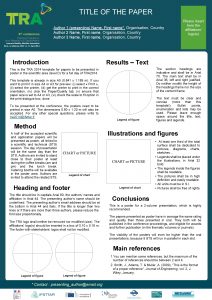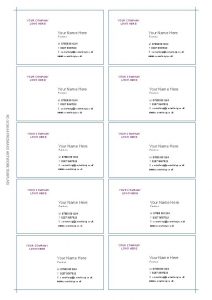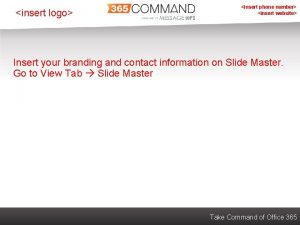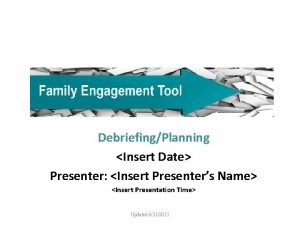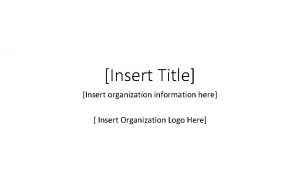Saving INSERT PRESENTER INFO HERE Saving money can

















- Slides: 17

Saving INSERT PRESENTER INFO HERE

Saving money can be difficult. Many people do not know where to start. There are many ways to save and places to cut cost. You will find suggestions in the slides that follow for how to start saving.

Record Your Expenses • One of the first steps to saving money is figuring out how much you spend. • It is important to keep track of every cent you spend, we often over look some of the everyday expenses, that seem small but can add up over time. • Once you have all of the information, break it down into categories and total it all.

Make A Budget • Once you know how much you spend, you can begin to create a budget. • Your budget should identify how your expenses and income measure up. • This will make it easy to plan your spending and limit overspending. • There are many tools available to help you create a budget, whether online or just writing it down on paper.

Plan on Saving Money • “Pay yourself” first, before paying your other bills. • After creating a budget, be sure to add savings into it. • If possible, try to save 10 -15% of your income into your savings, if you are not able, you should try to cut back on spending to make it possible. • Identify non-essential items you spend money on and start cutting back where you can.

Choose Something To Save For • Think about what you want to save for and figure out how long it might take to save for it. • You may have short term savings goals like a vacation or a new wardrobe or long term savings goals like a house or car. • You can use a savings calculator to help you plan better.

Decide on Your Priorities • After your expenses and income are determined, set your priorities. • Which items are most important to you? • Which items can you do with out until you are in a better place financially?

Pick The Right Tools • Use FDIC insured deposit accounts such as regular savings accounts, high yield savings accounts, bank money market savings accounts, or CD (certificate of deposit) for short term goals. • For long term goals consider accounts like IRAs, stocks or mutual funds. • Remember that stocks and mutual funds are not insured by the FDIC and are subject to investment risks. • It is wise to speak to a financial expert before making any decisions.

Make Saving Automatic • Utilize automatic transfers between checking and savings. • Automated transfers and deposits are a great way to save money since you don’t have to think about it. • Rule of thumb, if you don’t see it you won’t miss it.

Watch Your Savings Grow • Check your progress. • This will allow you to identify and fix problems quickly. • Carefully watching your savings grow may inspire you to save more and hit your goals faster.

Saving Statistics • In America, nearly 70% of adults have less that $1000 in their savings accounts. • Around 34% of American adults have no savings at all. • Women are more likely than men to have nothing set aside in savings, income may play a part in this. • Financial advisors recommend having 3 -6 months of living expenses in an emergency fund. • One of the top reasons people aren’t saving is because they are living beyond their means- no matter what their income is, some people can’t understand how to spend less than they make.

Signs You Are Not Saving Enough Here are some warning signs that could indicate whether or not you should be saving more: You don’t know how much you spend: • Most people know how much money is coming in but do not know how much is going out on little things like coffee, meals, etc. • Keeping track of your purchases may help you identify where you can cut back • Jot down expenses in a notebook or use an app that can track spending

Signs You Are Not Saving Enough You don’t have savings goals: • Think about your future and your saving goals • Calculate how much you need for future purchases • Start setting aside a certain amount each week or month You’re living paycheck to paycheck: • If you are barely paying your bills, you are living paycheck to paycheck • You will need to increase your income or decrease your spending

Signs You Are Not Saving Enough You’re putting off saving for retirement: • • People often think retirement is too far away to consider The longer you put off planning for it, the farther behind you get Enroll in a 401 K and take advantage of any company matching If a 401 K isn’t available, you can contribute to a Roth IRA You aren’t investing: • • If you don’t have enough money to invest, you aren’t saving enough Investing is one of the most effective ways to build wealth You can invest, even with a little money Compound interest is an advantage to starting to invest sooner

Signs You Are Not Saving Enough You can’t pay your credit card balance in full each month: • If you are unable to pay the full balance each month, you are spending more than you should • Analyze your spending habits and identify where you can cut back in order to free up your cash and pay your balance in full • Cut up your credit cards and only pay with cash You don’t have an emergency fund: • Experts recommend three to six months of living expenses in case of an emergency (car problems, medical expenses, etc. ) • Start with even $1000 as a cushion and build on it

Conclusion • It is very important to have money in savings • Financial worries can cause considerable stress for an individual and cause strain on relationships • Use tools that are available to help you start to save or keep you on the right track • Get professional advice when needed • Visit benefits. cat. com to learn more about your Financial Health

Sources • https: //benefits. cat. com/en/wellness/financial. html • https: //bettermoneyhabits. bankofamerica. com • www. cnbc. com/2017/04/26/signs-youre-not-saving-enoughmoney. html • www. bankrate. com/banking/savings/how-to-save-money-8 -ways-tosave-money-on-a-budget/#slide=9











